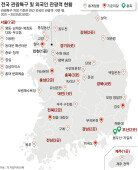Promoting personal happiness to address low fertility
Promoting personal happiness to address low fertility
Posted May. 29, 2024 08:01,
Updated May. 29, 2024 08:01
Why are people increasingly choosing not to have children? Perhaps it's because they don't see happiness in the parents around them, making the decision to have children less appealing. This is why low fertility policies often fail. Effective policies must consider their target beneficiaries and motivate them to change their minds and behaviors. As a working mom in this country, I'd like to highlight several aspects from my own and others' experiences that led to choosing a DINK lifestyle.
Everything starts with pregnancy. A Korean woman, A, had to quit her job because she couldn't afford infertility leave. For in-vitro fertilization (IVF), visits to the fertility clinic are required two to three days into menstruation. She injects a shot into your belly daily and visits the clinic twice a week. She goes to the clinic for egg extraction under general anesthesia and for daily injections to promote implantation for a while after the embryo transfer.
Now, onto daycare. My second child attended a small home-style daycare from 10 months old. However, it closed several months later. The headmaster couldn't renew the lease due to a significant rent increase. Private daycare centers receive government subsidies based on the number of infants they care for. With low fertility rates, fewer infants and thus fewer subsidies make it difficult for these centers to afford rising rents.
The market for outsourced child care after childcare leave is quite unclear. To hire a live-in babysitter, often an ethnic Korean from China, you post a job notice on a sitter-broker app. You receive pictures and short introductions of candidates, with their IDs as background checks. Ultimately, you choose a caregiver for your child through a 30-minute interview.
Problems persist even when grandparents step in to help. Another Korean woman, B, had to leave her job because her mother fell ill while caring for her grandchild. Though she has been re-employed once her mother recovered, her mother's health remains a constant concern.
Another Korean woman, C, wanted to join her spouse with her children who was posted overseas. However, her company did not permit any leave of absence, so she had to quit. The company was unwilling to set a precedent.
All the working moms I know who left their jobs did not do so because they disliked the work. It is tough to decide to have a child when it’s challenging to make ends meet on one’s own. Unless the government provides policy support and companies promote parental commitment, balancing family and work life remains challenging.
In the end, it's all about sustainability. Monthly diaper subsidies, large sums of financial support, or even slashing of loan interests during infancy may help, but they won't solve all post-infancy challenges. Even if parents manage to raise their children until they can heat up meals they made before going to work in a microwave, the issue of private education looms large.
About four months into his presidency in 2022, President Yoon Suk Yeol noted that over the past 16 years, a national budget of 280 trillion won was allocated to address the low fertility issue. However, despite these efforts, the birth rate for the second quarter of that year plummeted to 0.75 per person. The total birth rate for the previous year, across all four quarters, fell into the 0.6 per person range.
Establishing a new ministry provisionally titled for low fertility response planning and headed by a deputy prime minister to address low fertility is commendable. However, barriers to changing people's mindsets and behaviors must be addressed systematically. Effective low fertility policies require, first and foremost, listening to the voices of ordinary citizens. Failure to do so risks squandering tens of trillions of won from the national budget again.
Headline News
- N. Korea redefines S. Korea as ‘hostile state’ in revised constitution
- Samsung develops graphic DRAM with industry-leading capacity and speed
- Three questions allegedly leaked via text message during Yonsei Univ. essay test
- China to inject 340 trillion won in loans to support real estate sector
- Dodgers beat Mets to take 2-1 lead in NLCS







